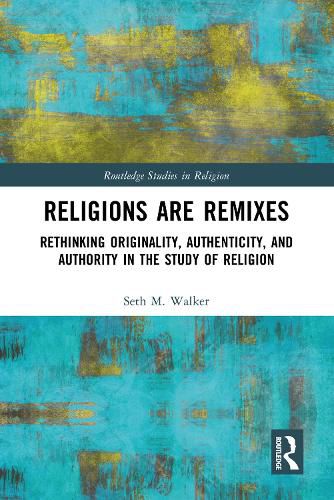Readings Newsletter
Become a Readings Member to make your shopping experience even easier.
Sign in or sign up for free!
You’re not far away from qualifying for FREE standard shipping within Australia
You’ve qualified for FREE standard shipping within Australia
The cart is loading…






This book utilizes an approach that centers on remix theory and conceptual metaphor theory, arguing for an examination of the study of religion via a model for analyzing cultural constructs that the author terms Remix+/-. After discerning the metaphorical correspondences underlying his argument, the author claims that the shift in conceptual and terminological framing remix provides can assist in understanding religious phenomena and developments differently, paying close attention to the sorts of meanings, implications, and assumptions that are disrupted and subverted as a result. The chapters indicate how notions of originality, authenticity, and authority are problematized and challenged from the perspective modeled by Remix+/-, with Buddhist philosophy occupying a significant role in the demonstrative examples. This book will be of interest to remix theorists and conceptual metaphor theorists because it advances a new approach to applying both remix and metaphor to the study of cultural constructs. It will also be valuable for those studying religion and digital culture-especially Buddhist thought and practice-as it proposes a new lens through which religiosity can be defamiliarized and critically analyzed.
$9.00 standard shipping within Australia
FREE standard shipping within Australia for orders over $100.00
Express & International shipping calculated at checkout
This book utilizes an approach that centers on remix theory and conceptual metaphor theory, arguing for an examination of the study of religion via a model for analyzing cultural constructs that the author terms Remix+/-. After discerning the metaphorical correspondences underlying his argument, the author claims that the shift in conceptual and terminological framing remix provides can assist in understanding religious phenomena and developments differently, paying close attention to the sorts of meanings, implications, and assumptions that are disrupted and subverted as a result. The chapters indicate how notions of originality, authenticity, and authority are problematized and challenged from the perspective modeled by Remix+/-, with Buddhist philosophy occupying a significant role in the demonstrative examples. This book will be of interest to remix theorists and conceptual metaphor theorists because it advances a new approach to applying both remix and metaphor to the study of cultural constructs. It will also be valuable for those studying religion and digital culture-especially Buddhist thought and practice-as it proposes a new lens through which religiosity can be defamiliarized and critically analyzed.